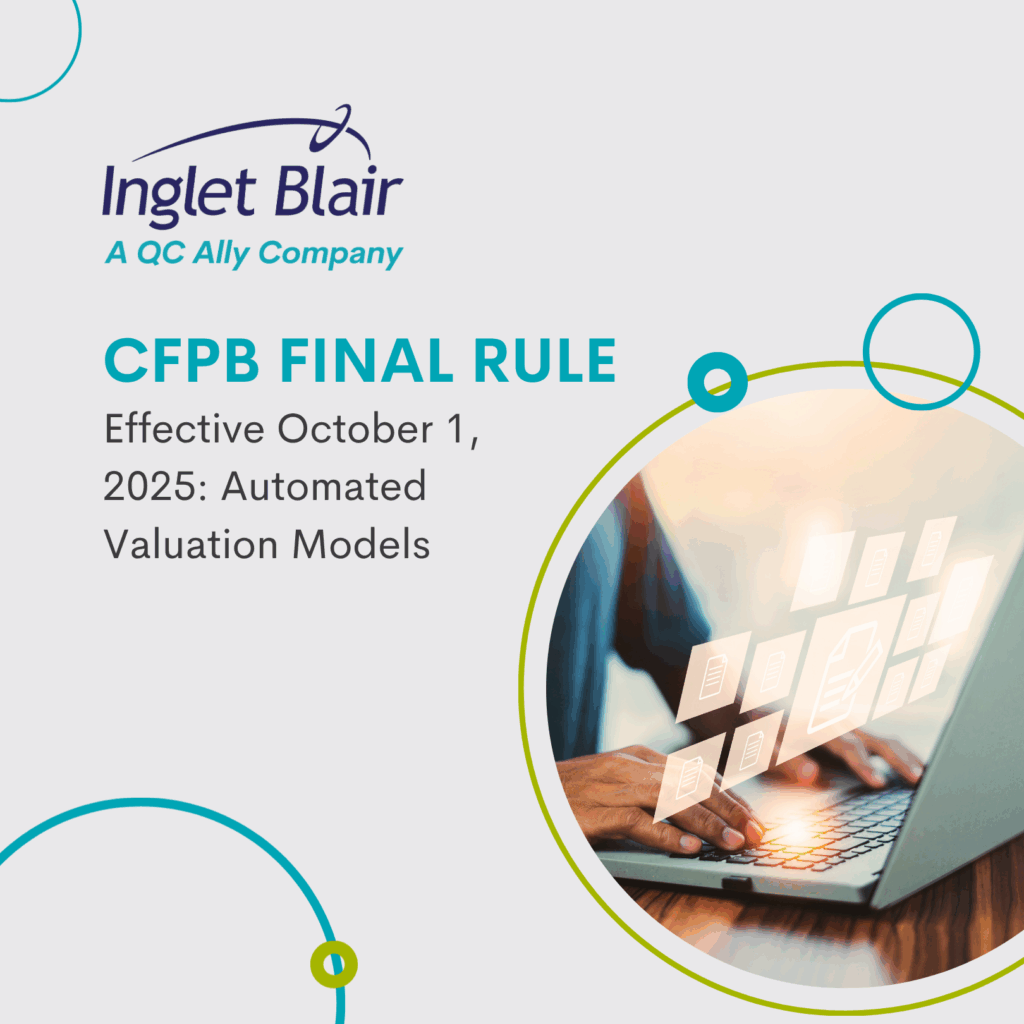
The CFPB’s latest rule on Automated Valuation Models (AVMs) just went into effect on October 1, 2025 (Consumer Financial Protection Bureau). The goal? Make sure AVMs are reliable, fair, and not open to abuse. Read on to learn how this new rule will impact your business.
Who Does This Rule Apply To?
- Lenders/Mortgage originators: If you’re using AVMs to make credit decisions (e.g. whether to extend, modify, or terminate a mortgage) then your AVM use is covered.
- Secondary market issuers (e.g. GSEs) when they use AVMs in covered securitization decisions, such as deciding whether to waive an appraisal.
- Not covered: AVMs used by appraisers developing appraisals (i.e. when a licensed appraiser uses an AVM as a tool) are excluded. Also, AVMs used only for portfolio monitoring or reviewing completed valuations are generally outside the scope.
So, the regulatory focus is on AVMs used in the “active decision-making” phases of mortgage origination, modification, or securitization and not behind-the-scenes review or monitoring.
Key Quality Control Requirements (aka the “Must-Haves”)
The rule lays out five quality control factors that covered institutions must build into their AVM governance. In plain language:
- Confidence in estimates
You need to show you believe in your AVM’s outputs (i.e. that they’re accurate and reliable for purpose). - Safeguards against manipulation of data
The data feeding the AVM must be protected from tampering, both upstream and downstream. - Avoid conflicts of interest
The rule uses the language “seek to avoid” for this factor. You should structure things so that the AVM’s outcomes can’t be unduly influenced by self-interest or skewed incentives. - Random sample testing and reviews
You can’t rely solely on internal “sanity checks”. You need to pull random samples of AVM outputs and do more rigorous testing, validation, and review. - Nondiscrimination compliance
AVMs must be managed so that they don’t produce values that correlate with or perpetuate discriminatory outcomes. Existing federal nondiscrimination laws still apply.
These standards must be embedded in your policies, practices, procedures, and control systems. In other words, you’ll need documented governance.
One Size Doesn’t Fit All
The rule recognizes that lenders differ wildly in size, complexity, risk, and resources, so it doesn’t dictate exactly how each institution must comply. Instead, you get to tailor your approach in light of:
- The size of your institution
- The complexity of your AVM usage
- The risk profile of the loans being valued
In short: big, sophisticated lenders may need robust model risk management frameworks. Smaller ones might adopt scaled-down approaches — but still with credible rigor.
Why It Matters (Beyond Compliance)
- Risk management: Misvalued collateral exposes lenders to losses if markets shift or models are flawed.
- Consumer protection: Ensures that valuations aren’t systematically biased in ways that harm borrowers.
- Market confidence: Investors, secondary markets, regulators all gain reassurance when AVMs are held to rigorous standards.
- Regulatory alignment: This rule codifies what many regulators already expected in supervisory guidance, but now with real backing.
What Lenders Should Do Next
Here’s a rough playbook for lenders to get ahead of this:
- Map your AVM use in originations or waivers
- Do a gap analysis against the five requirements
- Update governance and validation processes
- Check for fair lending risks
- Tighten vendor oversight
Want to learn more about the final rule or how we can help? Contact us:
